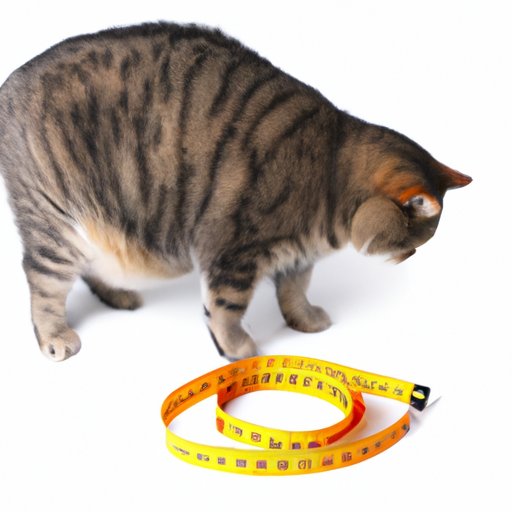I. Introduction
Is your furry feline starting to look a little too plump? It’s time to address the issue of cat obesity. Maintaining a healthy weight is essential for your cat’s overall well-being and quality of life. In this article, we’ll provide practical tips and advice on how to help your cat lose weight and live a healthier, happier life.
II. The Importance of a Healthy Weight for Cats
Just like with humans, carrying excess weight can have negative health consequences for cats. Obesity puts cats at higher risk for health problems such as diabetes, arthritis, and heart disease. Unfortunately, overweight cats are becoming increasingly common in the US, with an estimated 60% of cats being overweight or obese.
III. Signs Your Cat Needs to Lose Weight
It can be challenging to tell when your cat is carrying extra weight, as it often happens gradually. Signs that your cat may need to lose weight include a lack of energy, difficulty jumping or moving around, visible fat deposits in the abdominal area, and a lack of a waistline. Consult a veterinarian to confirm whether weight loss is necessary and for a healthy target weight.
IV. Switch to a High-Protein, Low-Carb Diet
One of the most effective ways to help your cat lose weight is by changing their diet. A high-protein, low-carb diet can help cats feel fuller for longer and lose weight more easily. Look for cat food brands that fit this description, and ensure that the food meets your cat’s nutritional needs. Consult a vet before changing their diet.
V. Portion Control
Measuring out portions is crucial for weight loss in cats. Determine how much food your cat should be eating based on their weight and activity level and use a food scale to measure out portions accurately. Providing too much food or too little can hinder progress.
VI. Incorporate Exercise into Your Cat’s Routine
Cats need exercise to maintain a healthy weight and prevent health conditions. Incorporating playtime into your cat’s daily routine can help them stay active and stimulate their minds. Get creative with toys and provide lots of supervised playtime. A cat tree can give them lots of opportunities to climb, explore, and play.
VII. Treats in Moderation
Treats can be great motivators for cats, but it’s essential to be mindful of portion sizes and choose low-calorie options. Avoid giving in after begging and treat excessive behavior. One great option can be small pieces of their regular food, and treats must be given in moderation.
VIII. Be Patient and Consistent
Remember that weight loss takes time in cats, so it’s essential to stay patient and consistent with your diet and exercise strategies. Make sure to track their progress to stay motivated, and celebrate small milestones along the way.
IX. Conclusion
Helping your cat lose weight can be a challenge, but it’s essential for their health and well-being. To recap, a high-protein, low-carb diet, portion control, exercise, treats in moderation, and consistency, are essential to help your cat shed a few pounds and maintain a healthy weight. Be sure to involve your vet along the way, and your cat will be on their way to a healthier lifestyle.
